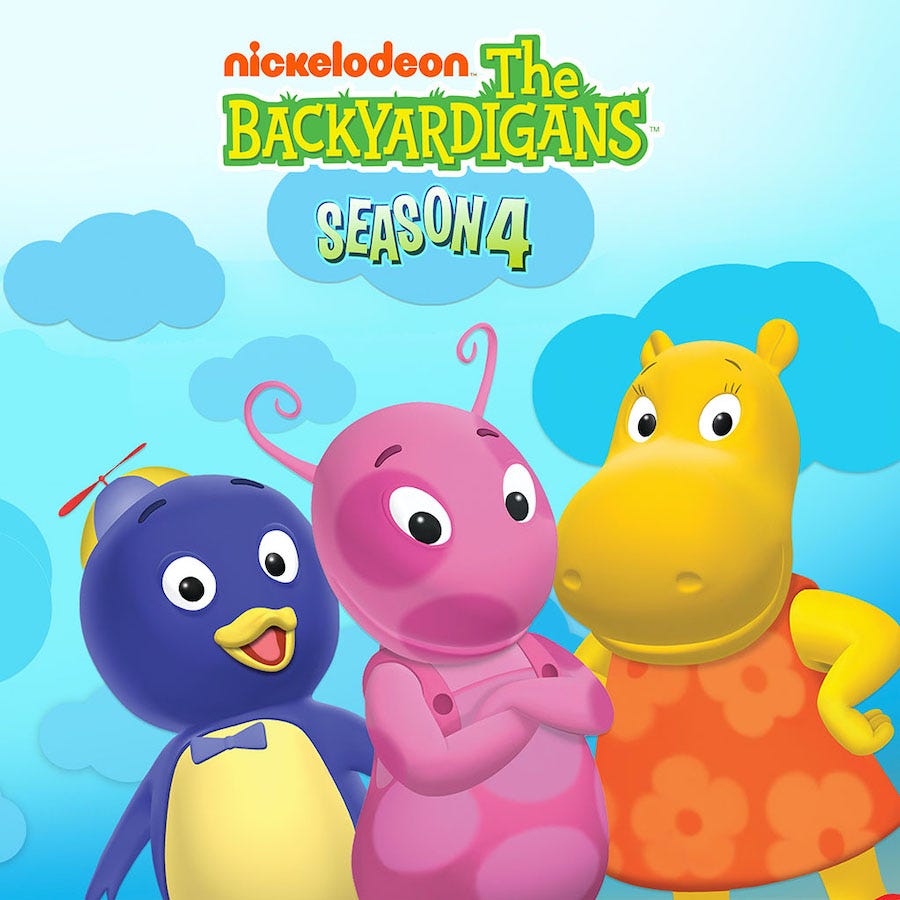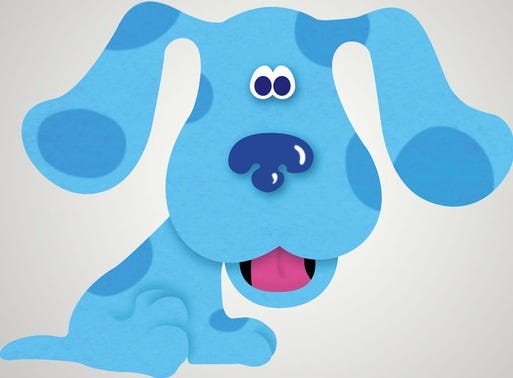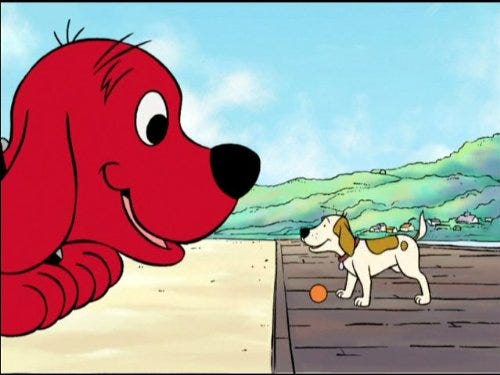Animated Content: Understanding Children’s Media
What are the benefits and limitations of animated shows for children's social, emotional, and identity development?
In the age of smartphones, tablets, and robot personal assistants, technology and media are changing to meet their audience's needs. As a child, I watched as media targeted towards me shifted from live-action to fully animated content. From Bill Nye the Science Guy to The Backyardigans, T.V. programs for children are using animated content more than ever.
Is this shift to animation okay for children? Is it helpful for their learning? Children growing up after 2010 are being raised with access to all kinds of media that can be overwhelming. How do we know what they should be watching?
Why might animation be helpful for children?
Using animation gives children’s content creators the freedom to bring anything to life. These shows are not reliant on child actors and are not bound to human characters. The television industry in the U.S. is built on the basis of Whiteness as the default, and in using live-action children, the media is severely lacking in its representation of identity. Animated T.V. can be more adaptable for international broadcasting. Animated mouths are more easily dubbed over, and leave room for children to be able to watch a show in several language options. Not only do language options provide accessibility for an international audience, but they also give parents the opportunity to expose their children to different languages through shows they know well.
Animated content is also able to portray any identity that a child might have, and animators are able to create ethnically and racially ambiguous characters that a child may see themselves in and feel represented by the show. Many of the ways television networks choose to represent diverse characters come out in the form of colorful talking animals. These animals can be something a child understands as part of their lived experience, like Blue from Blue's Clues.
They can also be something that isn’t seen in the real world, like Elmo from Sesame Street. Using these stand-in representations T.V. is able to replicate children’s experiences without depicting real human children. As NPR’s culture reporter Elizabeth Blair reminds us
To Sesame Workshop, this is Episode 4077 from May 3, 2004, titled "Elmo feels he's treated unfairly by Rocco" and written by Christine Ferraro. But to us, this episode could be called "We are Elmo."
Depicting children’s experiences without actually using children works because showing routine and relatability is key to telling a story children will hear despite a lack of real-life video.
These animal or animal-like creatures are cute, cuddly, and non-recognizable as comparisons to real-world counterparts. They can represent whoever the child sees them as; a friend, a sibling, a role model, or even themselves. Linda Simensky, previous head of PBS Kids notes that no matter who the children are watching it is key that their challenges are relatable and understandable to the audience. Research supports the idea that young children learn better from T.V. when the character on screen is like the child in their social world and feels familiar to them.
In shifting to drawn animation, children and those around them are reflected in how a character thinks and acts rather than the way they look. The nature of these shows should be true to a child’s known experience, and something they can see happening in their life whether it be now or in their imagined future. This honesty and wholesomeness invites children to play, and learn, along with the characters they see on the screen.
A strong community of people is an important factor in a child’s development of their life story. T.V. characters can become part of that community as many children will form attachments to seeing their favorite characters on screen every day. Seeing characters with different identities on screen can start the process of understanding differences in race and ethnicity as children hear conflict stories between identities in the show and begin to understand how to talk about these differences and conflicts in relation to their own experiences.
Why might animation not be helpful for children?
How do we know that animation truly represents children of all backgrounds? Even with good intentions, a group of writers and animators that create a show can have all kinds of unconscious ideas about different identities. They may unknowingly show characters that they think seem true to real life, but they are instead repeating stereotypes that may or may not be true. When there is little diversity in writers, animators or directors who choose the shows that go on T.V., they have no idea if what they are making is true or relatable for a diverse audience. What about the voices that are given to these characters? If an actor is not of a similar background to the character they voice, how do they know to act the character in a way that is real and not reflecting the actors own understanding of the world? To put it simply, they don’t.
It is not common for the people behind the scenes of shows to actually look like and think like the characters they are creating. Children that watch these shows will learn the stereotypes of different identities and that can create harm for those communities. It is likely that the big networks that put out hundreds of thousands of T.V. shows and ideas count on people to not think too deeply about who is writing and acting in these shows. They know that if the characters seem to be diverse on the surface, they won’t be questioned about who is actually telling the story.
Even when using colorful animals, children might not see themselves in the character like adults do. On research done with an episode of Clifford the Big Red Dog, researchers found that the very young children (around 1-3 years old) did not quite understand the moral lesson. The description of the aired episode highlights the situation.
There is a new dog in town - and he has only three legs. Clifford, Cleo and T-bone really like K.C., but they feel uncomfortable and unsure of how to act and what to do. One minute Clifford is totally overcompensating for K.C. and the next Cleo is fretting that his "difference" might be contagious! Ultimately, the dogs happily learn that differently-abled persons want to be friends, just like everyone, that they do not want people to feel sorry for them, that whatever is different about them is not contagious, and that they are able to do lots of things without anyone's help, they may just do things a little differently.
While the moral of the story was clear to older kids and adults that worked through the metaphor, the young children weren’t able to make sense of the story in their own life. This same phenomenon can occur with other shows that try to represent real-life situations with unreal characters. When children are not able to grasp the lesson, or make connections between themselves and the characters from an animated T.V. show there is an argument for keeping live television so children that very directly connect with the child’s own life can present the lesson.
Is animation okay?
Whether animated content for children is “okay” or not depends on the family that is viewing it. Every family might have different needs for shows for children. Some may like colorful dogs, and others may prefer live-action adults or children. There are some great things about animated content that can help children learn more about themselves and the world around them, and there are some bad things that come with big networks and not understanding the audience.
There are also many different types of content that are on the internet, separate from the stable and highly edited network television. Online videos are not as monitored and children could easily come across them without trying. This kind of content (see Blippi below) might be strange from an adult's perspective but can be very exciting and entertaining for kids.
Some of these videos are educational, fun, and great for children, but there are just as many videos that can bring confusion and harm to them. Social media can also act as a way to present children with all types of information. Tiktok has short 30 second videos, and snapchat shows pictures and videos that disappear after a day. For example, see a compilation of cute baby animals from Tiktok.
The content that is available to watch is unlimited. It is impossible to check every single video before a child sees it. There are differences in online content that might have stories or ideas that aren’t shown on standard television. These differences can be good and bring to the table concepts that may never be expressed by big networks.
Children should be allowed to explore and watch content that they find interesting and exciting. It is important to understand that these shows aim to mimic real life, and children need to have human interaction and experiences alongside video and T.V. content. In the end, there is no one rule when it comes to children’s content; there will always be many types to choose from that all aim to do different things for them. We should seek to find the kind of stories we want to tell children and build around that.








